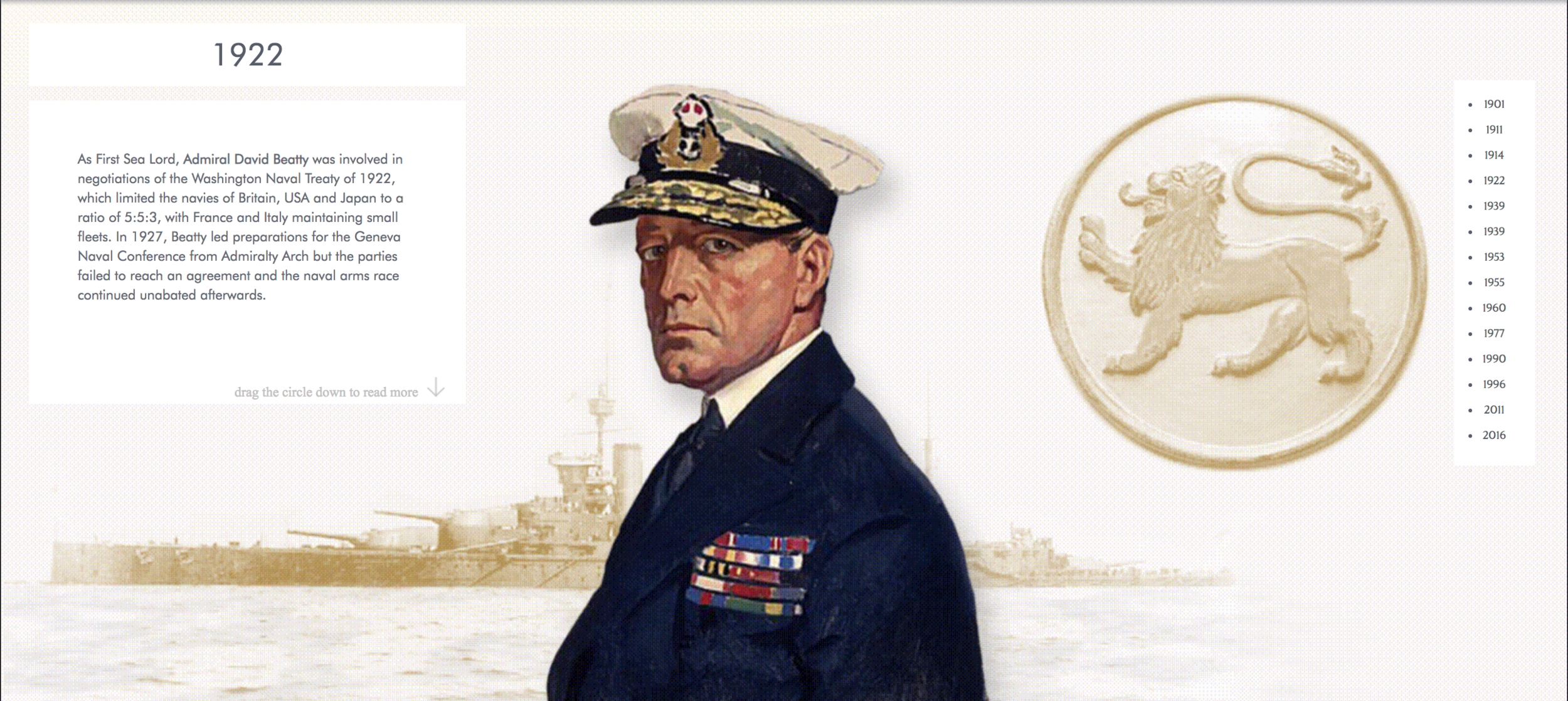Admiralty Arch
One of the most treasured landmarks in London, Admiralty Arch lies between Buckingham Palace and Trafalgar Square, sitting at the top of The Mall. It was built as the headquarters of the Royal Navy in 1910 and intended as a symbolic counterbalance to the nearby Horse Guards Parade, then headquarters of the Army. One half of Admiralty Arch housed private apartments allocated to the First Sea Lord, while the other had a labyrinth of offices.
As time passed, the building became less practical as an office space and was somewhat underused. The Government decided to lease the building out for 250 years, which would bring in a good income for the public purse.
I was brought on as consultant Project Manager / Creative Director for Prime Investors Capital, who won the bid for the lease, to craft a complete story of the building which would reflect its history and its future. My brief was to create a website which would inform the public, reflect the great care the investors were taking to uphold and enhance the fabric and essence of the building, and to allow stakeholders to see and present the development as a positive move.
The website is intended to be live from 2016 to 2022, whilst the development work goes on to create a grand hotel. The project proved fascinating and the material second to none - it allowed me an incredible opportunity to meet and converse with world-class architects, historians, archivists, artisans and more, which is often the best bit of my job.
Website
What do you do when you have a blank slate? Have some fun…? I knew we had a great team of coders, graphic designers and techies in Overthrow Digital, who could make any ideas I came up with into reality. So we just needed to gather all the material, fact check to the nth degree and brainstorm the heck out of it.
Whilst we got to work, the immensely talented Peter Horridge designed the logo and a bespoke font, inspired by the naval history and the lettering on the top of the building.
Our greatest challenge was how to demonstrate the project benefits the nation in an appropriate manner. I came up with the idea of focusing on the great artisans working on the project, as a development of this sort helps keep crafts, craftsmen and small companies, often with a Royal Warrant, alive. Their care and dedication to perfection would speak for itself, and the concept would help bring the building to life.
For the landing page, we created short films using current and vintage footage, sourced from Pathe, Getty and ITV, as well as animating an original drawing by the building’s architect, Sir Aston Webb. This work afforded us a meeting and private tour of the Getty Archives at their old buildings, where we watched archivists diligently restoring old negatives and browsed through personal albums of the Royal Family.
Research & Writing
Leaving the core Admiralty Arch team to focus on collecting and writing up information on the artisans, with whom they had an existing relationship, I took a deep dive into the history. Architectural Historian Professor John Martin Robinson compiled a thorough overview of events concerning the building, which I built upon with the kind help of the Admiralty Librarian in Portsmouth, the Head of the Churchill Archives in Cambridge, the widow of Churchill’s biographer Martin Gilbert, Churchill’s literary estate at Curtis Brown, The Royal Association of British Architects (RIBA), The Royal Academy (RA), The Institute of Contemporary Arts, Broadlands and many more.
I researched and wrote about the decryption of the Zimmerman Telegram by Naval Intelligence in Room 40 of the Admiralty; Ian Fleming’s work in Room 39, which no doubt informed his post-war plots and characters in the James Bond series; Admiral Sir Terence Lewin who formed part of the War Cabinet during the Falklands War; Sir Winston Churchill; Lord Mountbatten and HM Queen Elizabeth II with HRH Prince Philip, Duke of Edinburgh.
I also wrote a feature on Admiralty Arch’s architect, Sir Aston Webb, President of RIBA, President of the RA and founding Chairman of the London Society, who transformed the face of royal London, from the east façade of Buckingham Palace to the Victoria Memorial scheme, as well as designing the Victoria & Albert Museum. He was incredibly forward thinking - his legacy to the nation extends beyond the creation of iconic buildings and avenues to the improvement of the habitat around many urban dwellers today. The London Society’s 1919 Development Plan for London called for, amongst other things, green spaces in the outer suburbs – a precursor of the Green Belt legislation.
We sourced imagery from across the globe, liaising with artists, estates, museums, map collectors and high-calibre organisations including the Imperial War Museum.

































